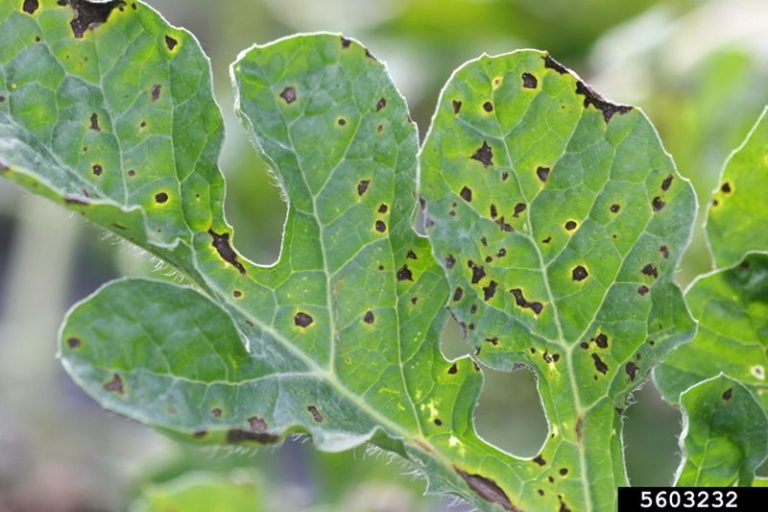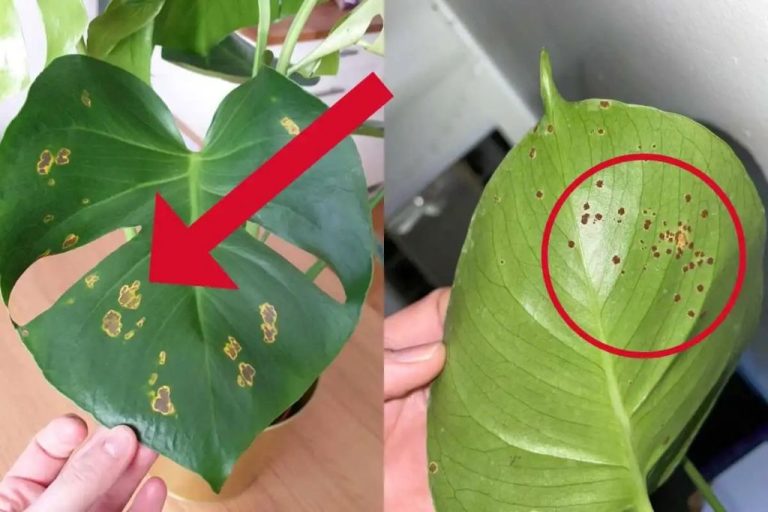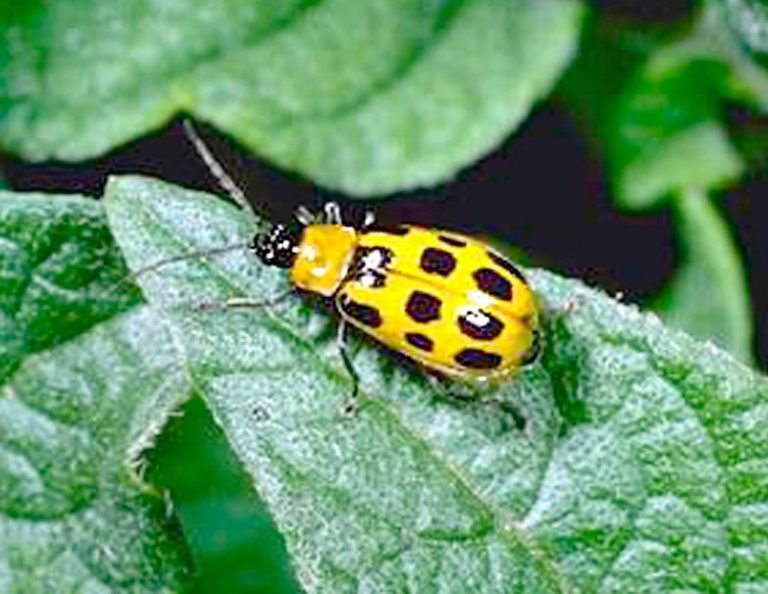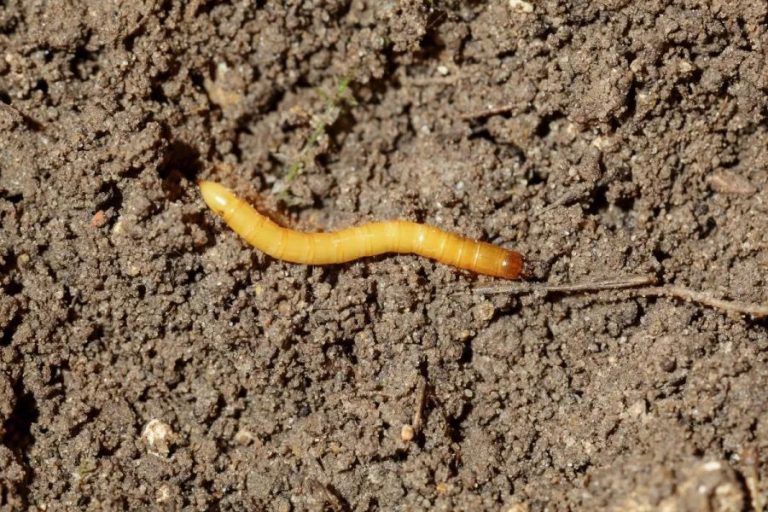How To Get Rid Of Whiteflies: Effective Control Strategies
What Are Whiteflies?
Whiteflies are tiny flying insects that look like tiny white moths, around 1/12 of an inch in size. They have a pale yellow or white body and wings, with a triangular shape when viewed from the side. Most varieties feed on the undersides of plant leaves, puncturing the leaves to suck out sap. They tend to gather in large groups on the undersides of leaves, and when disturbed will fly up in a cloud before resettling on the plants (1).
Sources:
(1) https://wallygrow.com/blogs/feature/whiteflies
Why Get Rid of Whiteflies?
Whiteflies can cause significant damage to plants in several ways. They damage plants directly by sucking sap and reducing plant vigor. The whiteflies use their sucking mouthparts to pierce plant tissues and extract sap from the phloem, which weakens the plant over time.
Whiteflies can also spread harmful viral plant diseases as they feed, including Tomato yellow leaf curl virus, which causes severe damage to tomato and pepper plants (Source). The insects acquire these viruses from infected plants and transmit them to healthy ones.
Another issue caused by whiteflies is the sticky honeydew they excrete as they feed. The sugary honeydew coats plant leaves and stems, promoting the growth of black sooty mold fungi. This black mold blocks sunlight from reaching the plant leaves, interfering with photosynthesis.
For all these reasons, it’s important to control whitefly populations and minimize the damage they can do to plants in your garden or greenhouse.
Natural Predators
There are several insects that act as natural predators to whitefly populations and can help control their spread such as ladybugs, lacewings, and spiders. UC IPM notes that natural enemies of whitefly include Encarsia, Eretmocerus, Prospaltella, bigeyed bugs, minute pirate bugs, and lacewing larvae.
Ladybugs, both larvae and adults, will feed on all life stages of whiteflies. The use of ladybugs for natural predation is popular in greenhouses. Lacewings are also voracious predators as both larvae and adults. Their alligator-like larvae can consume hundreds of whiteflies. Many common garden spiders will also prey on whiteflies caught in their webs.
Relying on this mix of natural predators provides ongoing control of whitefly populations. They attack all life stages and can significantly reduce their numbers when present in large enough quantities.
Insecticidal Soap
Insecticidal soaps are soap solutions that can be very effective at controlling whiteflies without harming beneficial insects like ladybugs. They work by penetrating the insect’s exoskeleton and causing dehydration that leads to death.
Insecticidal soap sprays can be purchased at garden centers or made at home by mixing 2 teaspoons of dish soap with 1 quart of water. Be sure to use real soap, not detergent. Some good soap options are Castile soap, potassium salts of fatty acids, or insecticidal soap concentrate.
To use insecticidal soap, thoroughly spray infested plants, especially the undersides of leaves where whiteflies like to hide. It works best to spray in the morning or evening. Avoid spraying during the heat of the day or in direct sun, as the soap solution can burn leaves if it dries too quickly. Spray liberally to coat all infested surfaces.
It’s generally safe for people, pets, and plants when used as directed. However, test spray a small area first, as some sensitive plants like ferns may be damaged. Insecticidal soap only kills insects it contacts directly, and effects last 3-7 days, so repeat applications are needed. Avoid using soaps with degreasers or detergents as these can harm plants.
Sources:
https://www.amazon.com/Safer-Brand-5118-Insect-Killing/dp/B00192AO90
Neem Oil
Neem oil is a natural pesticide and insect repellent made from extracts of the neem tree (Azadirachta indica). It contains compounds like azadirachtin that can disrupt the life cycle and kill whiteflies at various stages from egg to adulthood [1]. Neem oil works as both a contact and systemic pesticide, suffocating and poisoning insects upon direct application as well as when ingested.
To use neem oil for whiteflies, make a diluted spray solution with 1-2 tablespoons of pure, cold-pressed neem oil and 1 teaspoon mild liquid soap in 1 gallon of water. Add the soap to help the oil emulsify and stick to plants. Thoroughly coat the undersides of leaves paying close attention to the veins where whiteflies congregate. Reapply every 7-14 days for 2-3 applications. Neem oil is most effective on young nymphs before they attach themselves to feed. For heavy infestations, apply weekly for a month. Be sure to spray early in the morning or late evening to avoid harming beneficial insects that are active during the day [2].
Sticky Traps
Yellow sticky traps are an effective way to control whitefly populations. The bright yellow color attracts adult whiteflies, who get stuck on the adhesive surface. Traps can catch large numbers of adults before they lay eggs. Position traps just above the plant canopy to maximize effectiveness.
For best results, use many small traps rather than a few large ones. Space traps out to cover the whole plant, especially focusing on hot spots with the heaviest infestations. Check traps frequently and replace them once covered with whiteflies. Using traps in combination with other control methods is recommended for more thorough control.
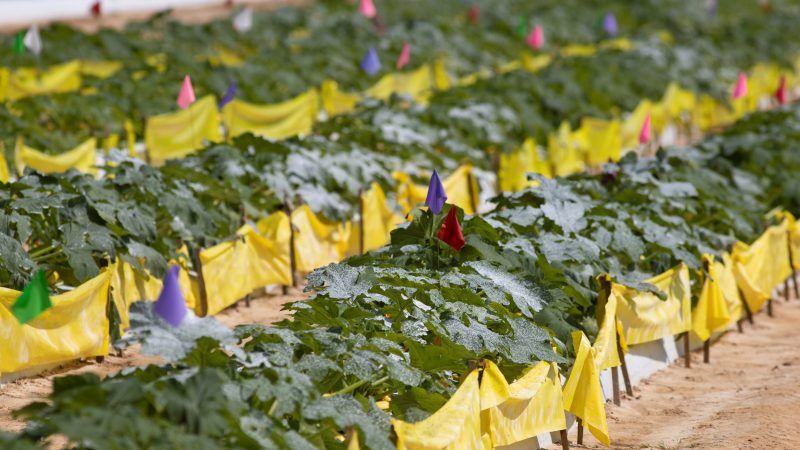
Some tips for using sticky traps effectively:
- Place traps early in the season before pests arrive.
- Position near vents and doors where whiteflies enter.
- Hang traps just above leaves, but avoid sticking to foliage.
- Use at least 1 trap per plant for small plants.
- Trap plants and perimeter areas to protect the whole garden.
- Pair traps with reflective mulches which repel whiteflies.
- Replace traps when full for continuous control.
Sanitation
Sanitation practices are an important component of whitefly management. Whiteflies can thrive when plant debris and weeds are left in the area. First, infested leaves and plants should be removed and discarded in sealed bags to prevent spread (UC IPM, The University of California Statewide Integrated Pest Management Program [1]). Crop debris should also be destroyed immediately after harvest to eliminate breeding sites (University of Florida IFAS Extension [2]). Furthermore, weeds both in and around the growing area serve as an alternate host and should be eliminated through cultivation, mulching, or herbicide applications (UC IPM [1]). Maintaining a clean area clear of plant debris and weeds will help reduce whitefly populations.
[1] https://ipm.ucanr.edu/PMG/PESTNOTES/pn7401.html
[2] https://edis.ifas.ufl.edu/publication/IN695
Reflective Mulches
Reflective mulches deter whiteflies by reflecting sunlight up into the plant canopy, which disturbs and repels the insects (1). Common reflective mulches include aluminum foil, titanium dioxide, and silver-coated polyethylene plastic sheeting. The light reflected off these shiny surfaces confuses whiteflies and makes it harder for them to navigate and feed on plants (2).
To use reflective mulch effectively (3):
- Install it before planting or in early spring before whitefly populations start to grow.
- Make sure it fully covers the soil, with no tears or holes.
- For row crops, put a 1-2 ft wide strip of reflective mulch on either side of the rows.
- Secure it well so it doesn’t blow away.
- Use drip irrigation under the mulch to avoid getting it wet.
Properly installed reflective mulch can reduce whiteflies by 80% or more on many crops like tomatoes, peppers, squash, and melons (1, 2). It’s an easy and eco-friendly deterrent that should be part of an integrated strategy to keep whitefly populations low.
(1) https://ipm.ucanr.edu/agriculture/floriculture-and-ornamental-nurseries/reflective-mulches/
(2) https://ipm.ifas.ufl.edu/pdfs/reflective_mulch_whiteflies_and_squash.pdf
(3) https://gailsaquaponicgarden.com/aluminum-reflective-mulch-for-whiteflies
Resistant Varieties
Certain plant varieties have been bred to be resistant to whiteflies. According to the Frontiers in Plant Science article “Plant resistance against whitefly and its engineering” (https://www.frontiersin.org/journals/plant-science/articles/10.3389/fpls.2023.1232735/full), tomato cultivars developed through conventional breeding using wild Solanum species donors contain genetic resistance to whiteflies. The article notes it is important to use resistant varieties as a pest management strategy.
On the website AZ Plant Lady, the article “White fly resistant plants” (https://www.azplantlady.com/tag/white-fly-resistant-plants/) recommends marigolds, nasturtiums, and calendula as plants that naturally repel whiteflies. Planting resistant varieties can reduce reliance on pesticides and provide an environmentally friendly approach to minimizing whitefly damage.
Professional Chemical Treatment
If you have a severe whitefly infestation that has not responded to natural or at-home treatments, you may need to bring in a professional pest control expert. According to EcoGuard Pest Management, professional pest control companies have access to stronger chemical treatments that can knock back heavy whitefly populations.
However, you’ll want to use caution with chemical pesticides. Overuse of chemicals can harm populations of beneficial insects in your garden, as well as contaminate fruits and vegetables. Make sure to follow all label directions carefully. Discuss options with your pest control professional to find the most targeted treatment plan.
For difficult whitefly problems, professional chemical treatment may provide necessary relief when other options have failed. But always start with the least-toxic methods first, and turn to pesticide sprays judiciously as a last resort.

